David Sager is rightfully acknowledged as one of the best currently active jazz trombonists. But he also has excellent credentials in other areas of the music.
Hal Smith: You are known in the Jazz community as a dedicated researcher. Can you describe your “day gig”—which sounds like a dream job for someone who is interested in the history of the music we love?
David Sager: Of course, and first I want to say thanks to you, Hal, for asking me to participate in your interview series.
My job title is Reference Assistant in the Library of Congress’s Recorded Sound Research Center. I work with a team of reference librarians, and we provide access to the Library’s Recorded Sound Collection of some 3.5 million recordings. All listening is done onsite.
Patrons’ interests and research include researching WWII news broadcasts, preparing for performances, finding recordings of a relative on the Major Bowes Original Amateur Hour, vintage radio entertainment, and more than I can possibly conjure up at the moment.
My research skills come in handy in answering the enormous number of questions that come in daily. Much of the time they are inquiring about obtaining copies of recordings essential for their individual projects.
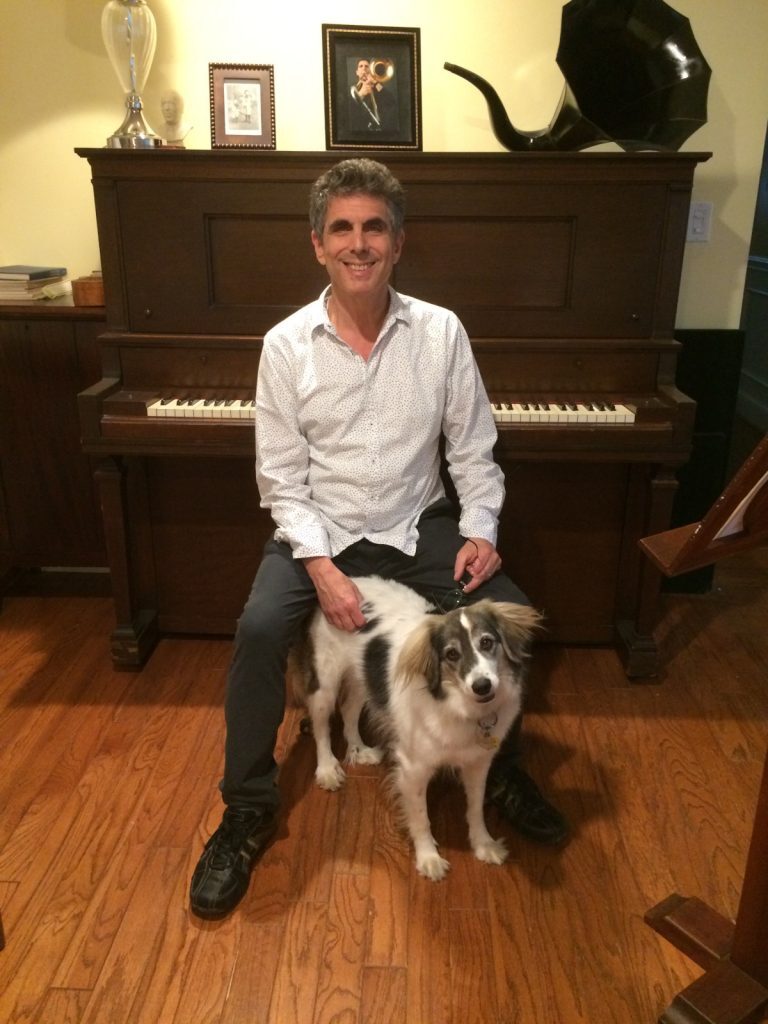
I also do a good bit of writing; blogs and other articles about the Library’s collection. And having all of the Library’s resources on hand with which to conduct research is really out of this world!
Since I’ve been teleworking since mid-March, I focus mainly on the questions and writing articles. Even though I am not on site, I still have access to most of what I need in order to do my job.
You have an encyclopedic knowledge of early jazz. What are some of the publications you have written for?
My first published piece was in the New Orleans Jazz Club’s publication Second Line, in 1984; an article about the role of the trombone in early jazz. I have also written articles for Tulane University’s Jazz Archivist, The Mississippi Rag, The Syncopated Times, and—on one occasion—The New York Times, which published my op-ed on James Reese Europe. I’ve also contributed chapters to a couple of academic books on jazz. And of course, I’ve published liner notes for a number of CD reissues of early jazz. Additionally, I have delivered lectures on early jazz at a number of music conferences, such as the Satchmo SummerFest.
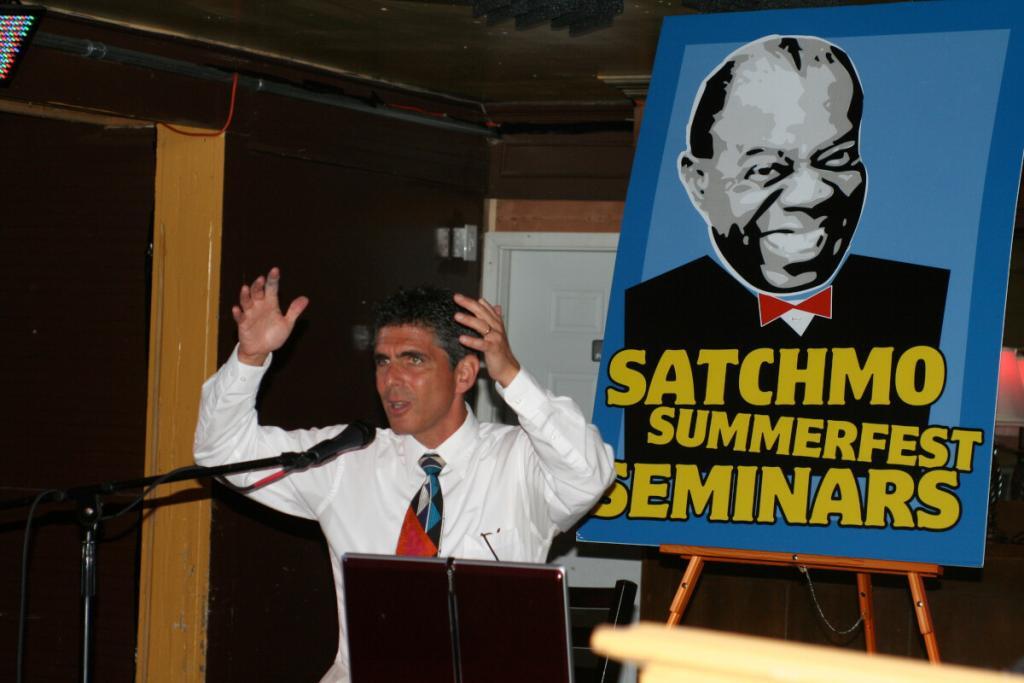
In addition to research and writing, you have been involved with CD production. One of them in particular became a best seller (at least temporarily). What is the importance of physical media to the listener?
When Doug Benson and I produced King Oliver: Off the Record, CDs as a medium were on their way out; we got in just “under the wire” on this one, as it was an enormous success.
I do recognize that physical media takes up space and can weigh one down. However, I believe the object is important—it gives you a destination; a place to sit down and listen at a specific time, not just as you’re walking or driving, etc. Having the physical object before you makes you sit still and absorb. And of course, liner notes can be very useful in making the music more accessible, but they are not easily read when you’re jogging or driving somewhere.
What are the other CD reissues you have helped to produce?
I co-produced, along with audio engineer Doug Benson, Cabaret Echoes, a collection of early recordings by New Orleans-based bands, accompanied by interview excerpts from the Hogan Jazz Archive Oral History Collection. Also, The Complete Wolverines, and New Orleans Rhythm Kings: Complete Recordings (1922-1925). Most recently, I produced—with lots of help—Nat Brusiloff: Out of a Clear Blue Sky, which meant a lot to me, since Nat was my relative.
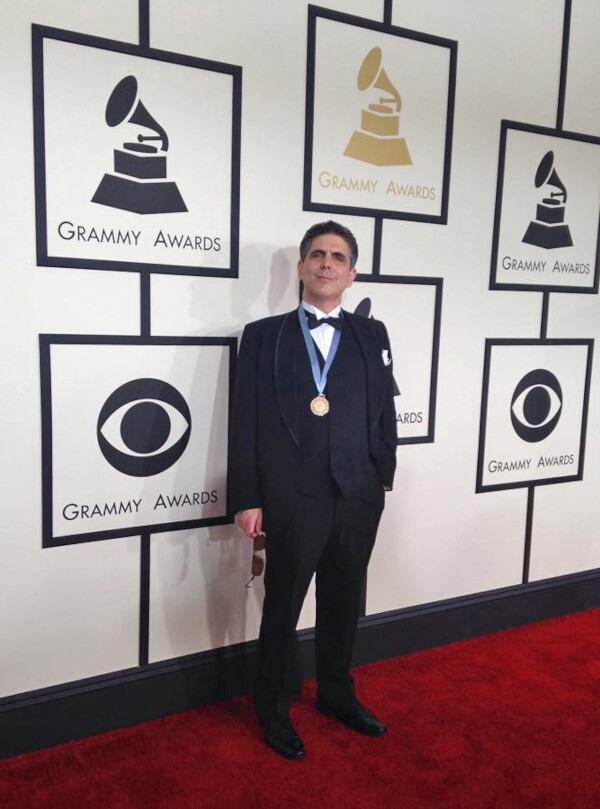
For Archeophone Records, I put together Arthur Pryor: Echoes from Asbury Park, and a collection of Isham Jones recordings, titled Happy: the 1920 Rainbo Orchestra Sides.
You have written some superb liner notes for CD booklets. Two of them were recognized as particularly significant by a prestigious organization. Can you say something about that?
I received two Grammy nominations for Best Album Notes. One for King Oliver: Off the Record and the other for the Isham Jones collection mentioned before. I didn’t win, but being nominated was quite thrilling, as was attending the Grammy ceremonies.
With the King Oliver set, Doug and I weren’t trying to set the world on fire. We just wanted to do something no one else had done—at least in our minds—successfully: That was to present the Oliver recordings in plain, unsullied sound, along with accompanying notes that explained the Oliver band from a musician’s point of view. We scoured the country and Europe for original copies of the 78s from private collectors. Most gratifying, was to gain access to the only copy of Oliver’s “Zulus Ball.” As it turned out, the audio quality did set the old-time jazz world on fire and the album notes got some attention, too.
What do you think album notes should convey?
Great segue! The written word cannot convey the same emotional or spiritual charge we can get from music; you know—that old adage about “dancing to architecture.” However, words can guide us and let us in on some of the secrets behind the music, and ultimately give someone better access to the music’s riches.
Album notes ought to give the listener musical information, without theoretical or technical jargon. Not everyone is a musician. I strive to identify what the music gives to me and try to convey those attributes directly and clearly.
Having a musical background is an important ingredient for writing such essays. We have all read liner notes that promote old myths and draw conclusions that are misleading. I read a lot of those as a kid. But, it is also important to remember that even those poor notes served a purpose, for they provided a jumping off place from which to ask questions.
Some of your relatives were musicians. Would you tell the readers about them?
My great grandfather, Joseph Brusiloff, was a court musician for Czar Nicholas II. He also was the conductor of the Charkov Opera Orchestra. My grandmother’s brothers Nat and Leon Brusiloff were well-known musicians. Nat was Kate Smith’s first radio maestro. Leon was a popular D. C. society band leader and the founder of the Metropolitan Police Boys Club Band. Leon’s son, Gene Brusiloff, was a highly respected New York-based trombonist and teacher and a great influence on me.
Did the Brusiloffs inspire you to take up the trombone?
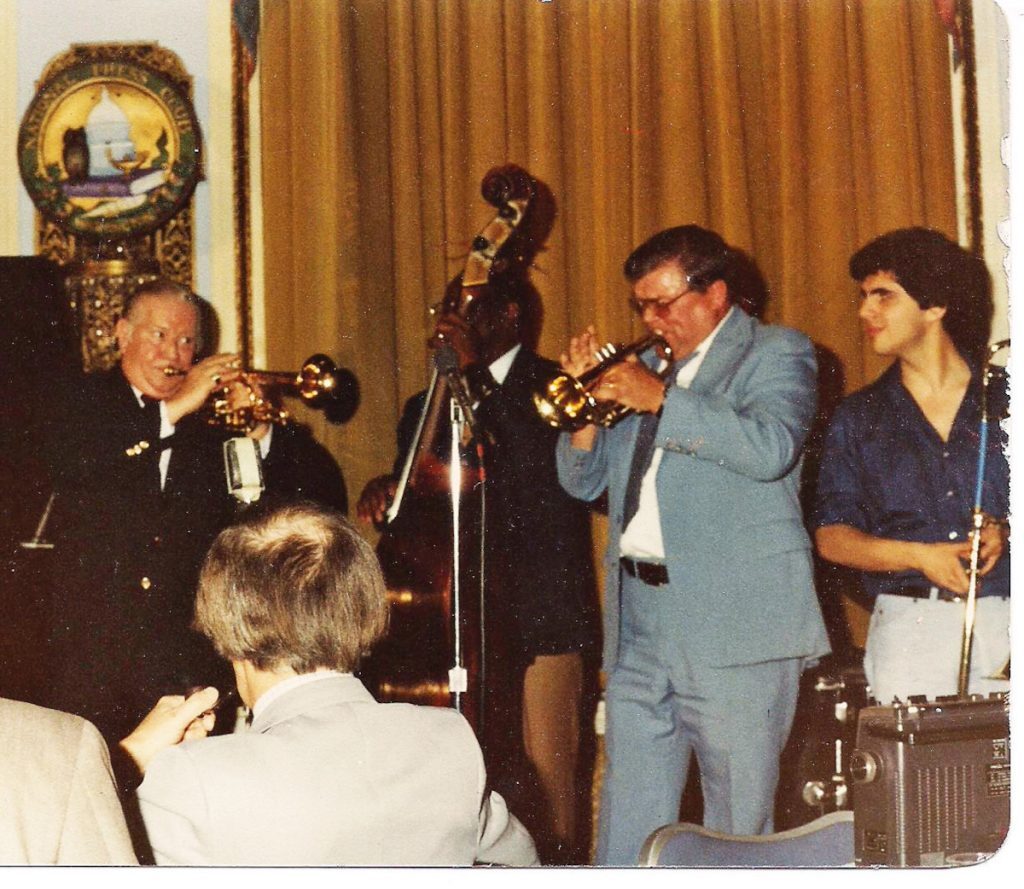
Not directly. My main two reasons were: my brother, Steve, played trombone and was excellent. The other had to do with a box set of big band LPs that my parents bought. The first tune on disc one was “I’m Getting Sentimental Over You,” by Tommy Dorsey. It was shockingly beautiful and haunting; even a bit scary. Steve had an old trombone that he wasn’t using anymore and it was handed down to me.
I started taking lessons with a gent who came to our house to teach my two brothers. He was Robert Isele (Eye-zlee), a very modest man who had been the trombone soloist in the U. S. Marine Band and was considered the finest trombone soloist since the days of Arthur Pryor. As a kiddo, this made no impression on me, but his beautiful tone on the trombone sure did, as did his kindness and patience.
Being enamored with these old big band recordings, it wasn’t long before I started hunting for 78s and playing my trombone along with them, at least as best I could, which wasn’t very good at all—but I was enthusiastic!
What are some of the recordings you listened to when you first started playing?
One of the 78s that my parents owned was the Capitol recording of “12th Street Rag” by Pee Wee Hunt, which was a “dixieland” record; no pretense at all to be traditional jazz or anything serious. It was corny, but very well played and I loved the way Hunt’s trombone filled in the spaces.
Soon thereafter, my father began bringing home LPs from the public library that he thought I might like: Henry “Red” Allen, Louis Armstrong’s Hot Five, Bix Beiderbecke, Jelly Roll Morton, etc. Hearing Kid Ory with Louis Armstrong had a deep effect; he filled in those spaces kind of like Pee Wee Hunt, but with far more guts. Some of his notes made my spine shiver!
On the Red Allen RCA Victor Vintage Series LP, I heard J. C. Higginbotham, whose playing really turned my head around. My mom gave me the Jack Teagarden Vintage Series LP, and that really got under my skin—in a good way. So, there I was—at around 12, I was enthralled by Higgy, Teagarden, Kid Ory, as well as Bix and Louis. I was no prodigy, but I had a burning desire to imitate these sounds. I had a concept of what the instrument could sound like, in certain hands.
As a young teen, I became acquainted with local record collector and musicologist: Dick Spottswood, who was kind of a 78 rpm mentor to me. He guided my musical tastes by introducing me to many great jazz recordings that were only available on 78s. After a while, I became aware that there was a correlation between how old-fashioned and arcane the 78 rpm labels appeared and the accessibility of the music that was on them. The ones that looked older/more ornate, played music that sounded more remote; made less sense as far as my young mind could understand. I began to make assumptions about how old a recording was and, I suppose, how jazz and dance music evolved. Mind you, it was an unsophisticated approach. But generally, I was in the right neighborhood.
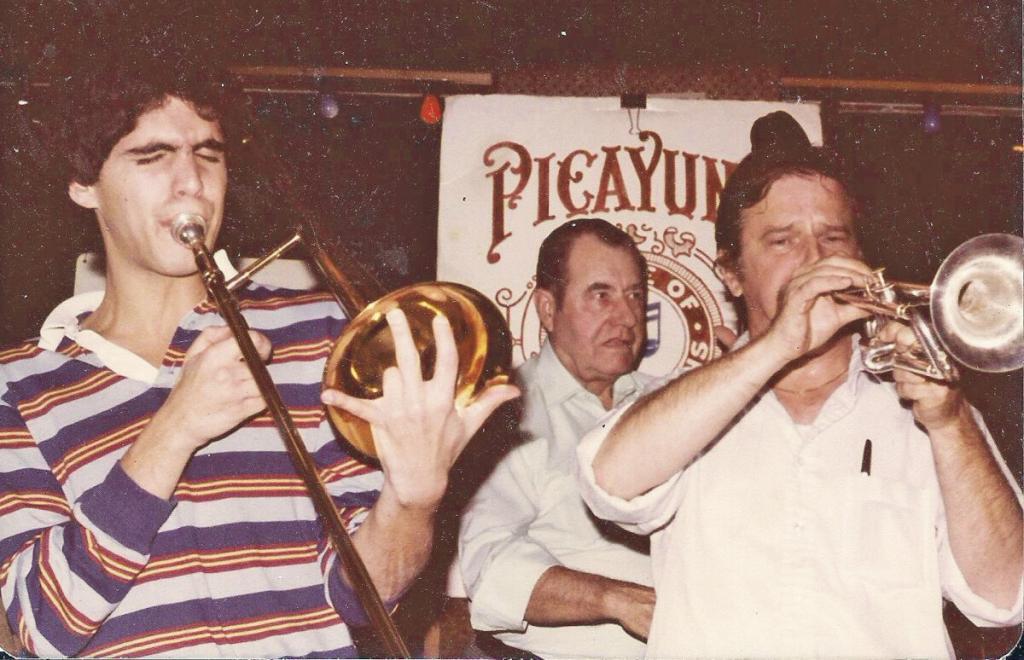
My first experience seeing live jazz was when I was eight. My parents took me to see Benny Goodman, who had with him, among others, Lou McGarity, who really made an impression. I also heard lots of great jazz on the radio. Station, WMAL AM, presented The Album Sound, with Felix Grant, which aired Monday through Friday, from 8 pm till midnight. Can you imagine that? On AM! Felix played all the greats and after hearing a broadcast featuring Bobby Hackett and Vic Dickenson, I learned that they were coming to Blues Alley, in D. C. My dad took me; I had never heard anything like it before, except on record. I couldn’t believe the sounds Dickenson coaxed from his horn; pure magic.
When did you start to play in public?
I joined the local jazz society, the Potomac River Jazz Club, and began attending their musical events, where I would sit in with the various local bands. Through friends in the PRJC, I learned that a local band, the New Sunshine Jazz Band, needed a trombone player.
The NSJB was kind of famous in the D. C. area. They had an album, titled Old Rags, out on a semi-popular label—Flying Dutchman, which had received some good press. The band leader was Thornton “Tony” Hagert,” a trumpeter and music historian, whose life was largely devoted to vernacular American music. He studied early orchestrations of popular dance music and jazz, comparing them to interpretations found on recordings. I’m minimizing the great breadth of his work and knowledge. But you can see the appeal it must have held to a young musician interested in early recordings.
Anyway, I joined the band. I was 17 and the others, were in their forties to sixties, except for vocalist Annie Stanfield, who was in her mid-twenties. The band’s trombonist, Clayton Eakle, hung on for a few months, while this young’un learned the ropes. It was from Clayton that I learned much about following chord changes and improvising.
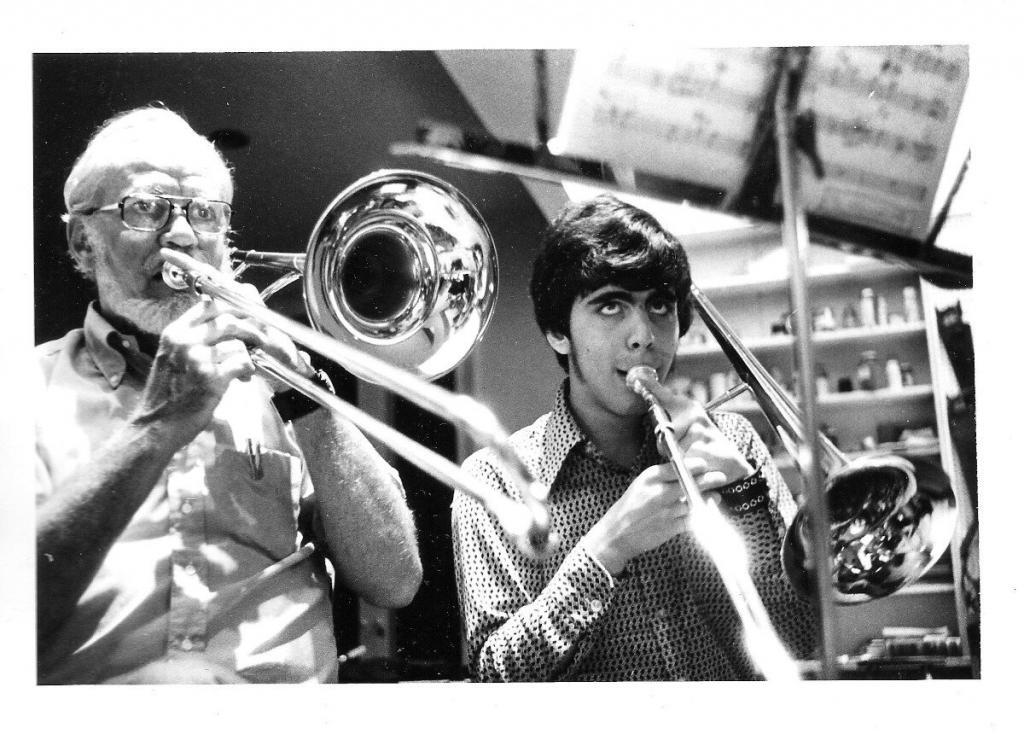
Tony Hagert became a mentor to me, perhaps unwittingly. I spent hours with him in his huge townhouse on 16th street in D.C., listening to obscure dance bands from the ’teens and ’20s and looking at antique published orchestrations of many of the same arrangements being played on the records. I got to hone my accuracy about the stylistic chronology of jazz and its close relatives. It was through Tony that I met scholars of early jazz and black American music, such as the late Lawrence Gushee, who eventually became a very good friend and an enormous help with my later research.
Did you study music in college?
After high school, I was accepted into the music school at Ithaca College, as a Music Ed/Performance major. To my surprise and disappointment, when I arrived, I found out the trombone professor, with whom I was going to study, had moved on. In his place was a white-haired, wizened man, with a high-pitched New York-type accent and seemingly, little regard for conversation. Most of my fellow trombone students were not pleased and even afraid of this man, who barely came up to my shoulder. His name was Allen Ostrander, and it turned out that he had been bass trombonist with the NBC Symphony, under Toscanini, for 29 years. Following that, he played in the New York Philharmonic.
My first lesson was like everyone else’s: he busted me back to page one of the Arban book and force fed me brass playing fundamentals. Within a week, all of us trombonists, many just out of high school, were humbled and in awe of this man, who, as it turned out, was friendly and warm. As much as we loved Mr. Ostrander, the college administration wanted someone younger and more superficially attractive, to lure in new students. So, he was dismissed. After a disappointing second year at Ithaca, I left and returned to Maryland, attending Towson State University.
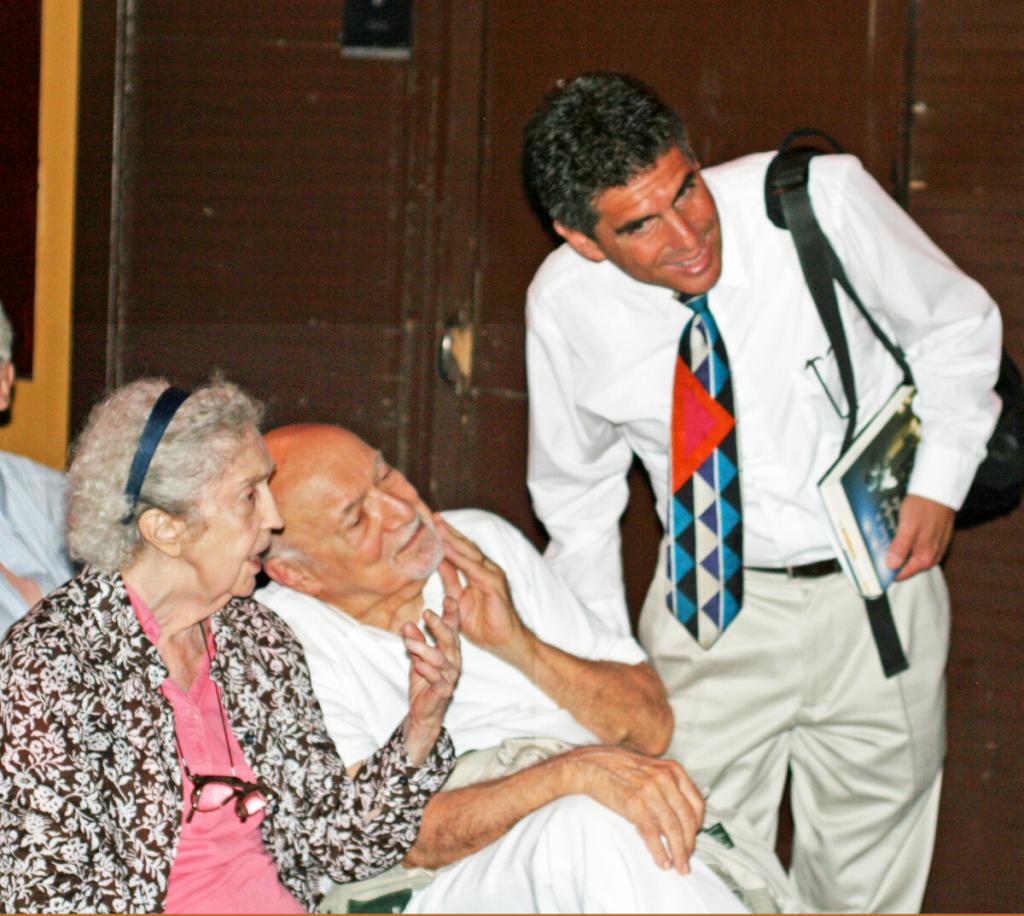
Towson was famous for its jazz ensemble, led by Hank Levy, who had arranged for Stan Kenton and Don Ellis. He wrote these fabulous, often bombastic pieces in exotic time signatures, such as 13/8, etc. He composed and arranged the piece “Whiplash,” which was featured in a somewhat recent motion picture of the same name. Me, being an early jazz guy at heart didn’t really fit in with this crowd, but I enjoyed it nonetheless. However, I was often teased unmercifully—but good-naturedly—for loving Louis Armstrong or Jabbo Smith, by members of this very hip crowd.
After some years, my formal education resumed in 1997, when I enrolled in the Jazz History and Research Master’s Program at Rutgers University. The major impetus behind that degree program was to train musicians in the role of being jazz journalists.
Did you intend to become a professional musician after college?
That was my dream. Following graduation, I tried teaching school, which I hated. I needed some kind of job, and got hired by a large insurance company, processing claims forms. Talk about hateful! Relief came on Friday nights, when I got to play with Tony Hagert’s new band, the Picayune Cabaret Band at a saloon in Georgetown, called the Saloon. We played music inspired by King Oliver, Jelly Roll Morton, and Bunk Johnson—who was a particular favorite of Tony’s and also our drummer Beale “Bill” Riddle.
Riddle had known Jelly Roll Morton and Baby Dodds and other pioneering players. He was not really a musician, but played a good press roll and knew how to be supportive. Bill was another mentor to me and introduced me to a lot of early jazz I had not yet encountered—especially Bunk.
It was through Bill that I met the pianist Bob Greene, who was living in Virginia and played a Saturday night gig in Arlington. Greene sensed my frustration with the insurance company and suggested I move to New Orleans, where he was certain I could find some satisfying work. I left Maryland at the end of April, in 1983.
You played with Banu Gibson and the New Orleans Hot Jazz Orchestra for quite some time. What other groups did you work with in New Orleans?
When I first got to New Orleans I met a fine trombonist named Paul Crawford, who had been part of the scene for many years, and leader of the famed Crawford-Ferguson Night Owls. Paul had been playing on the Steamer Natchez and kind of turned the gig over to me. The band leader was cornetist Wes Mix.
I also worked with Connie Jones, Steve Pistorius, Danny Barker, George Finola, and with the vocal trio, the Pfister Sisters, and many others.
Are there any particular gigs, concerts or tours from your time in New Orleans that were particularly memorable?
One standout gig was at Mahogany Hall on Bourbon Street with Neil Unterseher’s Razzberry Ragtimers. Seated in the front was a beautiful woman named Natalie. It turned out that she was from Maryland, also. We had a lot to discuss. A few years later, we discussed getting married—which we did! I shall never forget that gig! There’s a long story to go along with it; for another occasion.
Thanks to Banu Gibson, I’ve toured almost every state and a good chunk of Europe. One memorable concert was in Tiffin, Ohio, in 1989. I think we had the best edition of that band that night, with, in addition to Banu, Charlie Fardella, cornet; Tom Fischer, clarinet and sax; James Singleton, bass; and a drummer named Hal Smith. There is a video of the proceedings and is accessible on YouTube. The band was on fire!
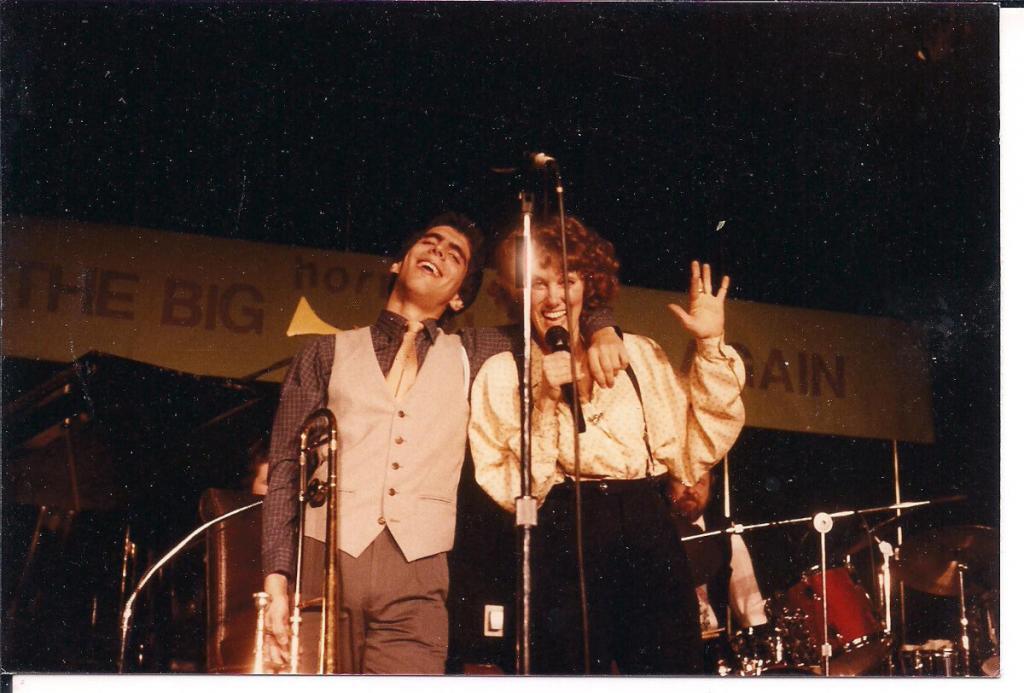
Banu’s concert at the Hollywood Bowl was tremendous; particularly when we rehearsed with the Hollywood Bowl Symphony on a TV soundstage. The room ambience was completely dead—no reverberation. But you could hear everything. We had played a lot of pops concerts with symphony orchestras, but this was the first time the fiddle players actually swung. All the Bowl players were experienced TV and film musicians.
And, speaking of symphony concerts—you know that we had this routine, where I would sneak up to a high balcony and play a chorus of “Embraceable You,” following Banu’s completely acoustical rendition (no mic). I think it was with the Sacramento Symphony, where I climbed the stairs, while Banu sang, only to be met by an usher who would not let me enter—“I’m sorry sir, you cannot go in while the performance is on.” I finally convinced her it was all part of the act!
In 1990, I traveled to Rome to record the soundtrack for the Italian-produced film, Bix: an Interpretation of a Legend. My job was to conjure up the sounds of Tommy Dorsey, Spiegle Willcox, and Bill Rank, the last of whom was the hardest to emulate. The late Bob Wilber was the leader. The band included the late Tom Pletcher and Kenny Davern. Also on hand, and very much alive, were Vince Giordano, Andy Stein, Keith Nichols, Lino Patruno, and a local drummer named Walter Ganda.
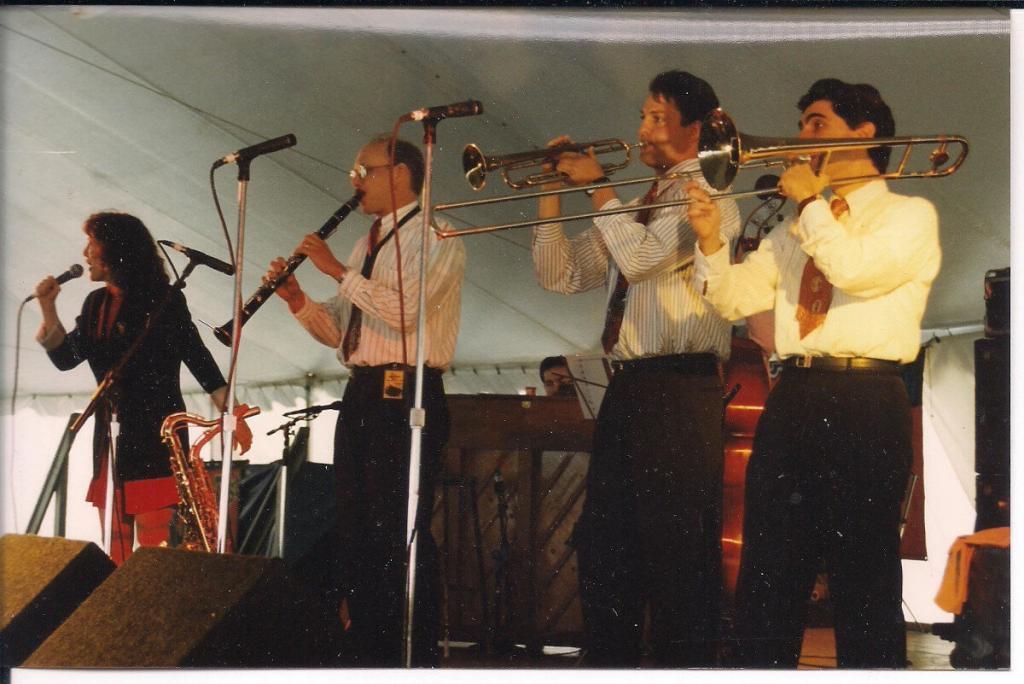
Perhaps, my most memorable gig of all occurred after I moved back to Maryland. David Boeddinghaus was putting together a hot jazz band to play for a musical revue in Paris, titled, A la recherche de Joséphine—a Jerome Savary production—inspired by Josephine Baker. David hired me for the two-month Paris run. I performed at the Opéra Comique, in the company of some of the best in the business: Chris Tyle, cornet; Otis Bazoon, clarinet and tenor; David Boeddinghaus, musical director, piano and arranger; Tom Saunders, tuba, string bass, and bass saxophone, Katie Cavera, banjo and guitar; and James Alsanders, drums. The band sounded frighteningly authentic and natural; like you stepped back into 1920s Paris. We had a packed, enthusiastic house every night.
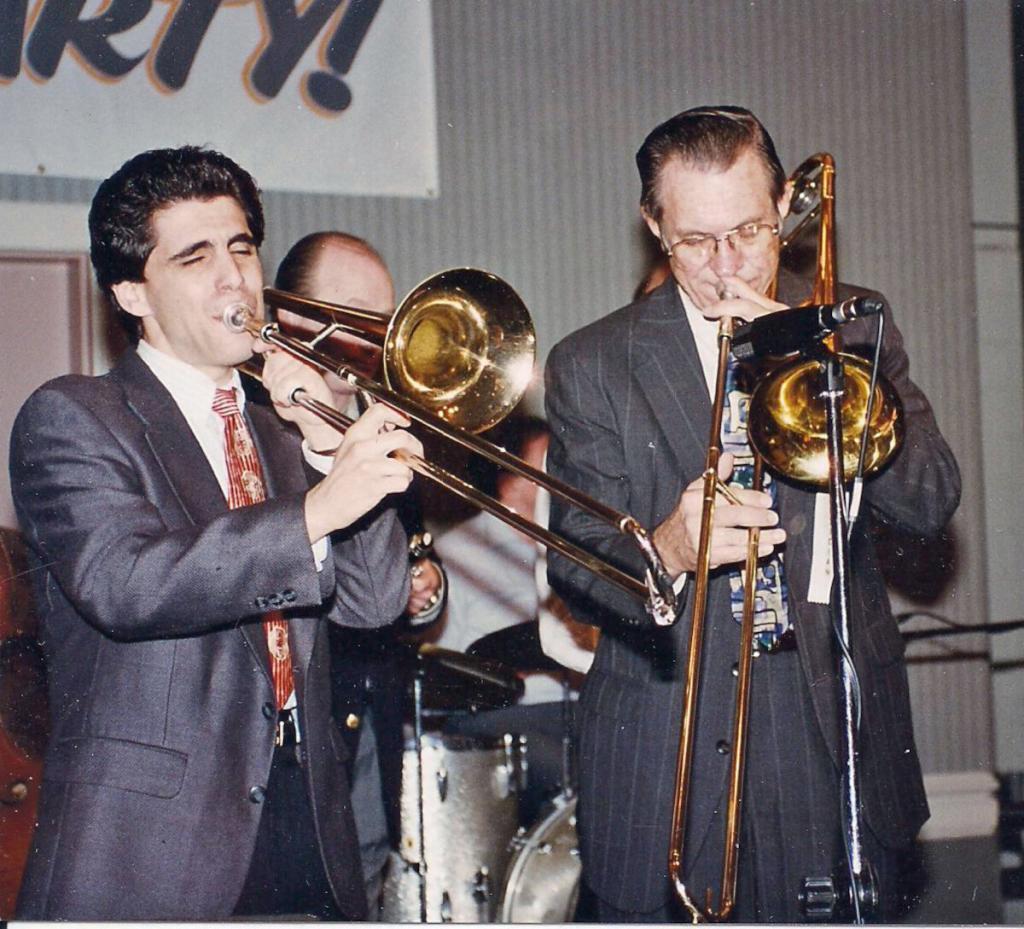
What are your thoughts concerning “repertory” playing—re-creating classic jazz records vs. playing “in the style?”
Most of my professional playing has been in the repertory category, where I have attempted to capture the nuances heard in old recordings without resorting to playing every last breath and grace note. I’ve heard heated discussions over the years that persist: should one attempt creating a replica, or is being true to a style a better choice? Some argue the validity of recording replicas of classic recordings due to much-improved audio quality accessible to us today. Others say it is futile exercise, trying to conjure up what someone else has already done so well.
Consciously imitating a recorded performance down to the bone provides fascinating and essential insights to the music. I know for a fact that there are many latter day “recreations” that have caught the ears of some of today’s finest classic jazz musicians. However, I try to aim for somewhere in the middle, for repertory has a wide-ranging rheostat of intensity.
For example, I made some recordings with Dan Levinson’s Roof Garden Jass Band, in which we played very precise transcriptions from the ODJB and other early recording jazz bands. We were all comfortable enough with the dialect and it was no problem evoking the right sound and atmosphere. With Dan’s encouragement, we used our own creative skills within the walls of the style. So, I’d say the “repertory rheostat” was turned up to about 75%.
The same is true for three wonderful Stomp Off volumes by the State Street Aces, on which you, Hal, played drums. Musically, they stand on their own and at the same time keep within the boundaries of various styles from a particular era. Today, that kind of attention to detail and respect for the original is beautifully echoed by our friends in Chicago, the Cellar Boys. A more liberal, but equally as true practitioners are the members of Tuba Skinny, who unfailingly capture an authentic old-style, while reminding us that jazz, blues, and hillbilly can coexist beautifully—think “Clarence Williams plays Gid Tanner.” It works.
And let’s not forget the cosmic one-man-band results achieved by our friend Colin Hancock, who so realistically imagines performances of unrecorded material by various early jazz bands, with extraordinary attention to delivery and dialect as deduced from existing recordings. One may ask, “What’s the point?” I don’t know the answer, but I love it; the listening equivalent of watching a great magic act.
I’ll tell you a funny story about all this. I played a concert with James Dapogny’s Chicago Jazz Band, and Jim had programmed his transcription of “Tennessee Twilight,” taken from an Eddie Condon record. The original featured a solo by trombonist Floyd O’Brien that I found so compelling, I attempted to copy every last drop of it. The challenge was to reproduce O’Brien’s eerie muted tone. I tried all sorts of mutes and could not really get close to what he used. I finally jury-rigged something that got pretty close. Oh, I worked hard at this!
At the performance, “Tennessee Twilight” came off, well—I thought. Afterwards, drummer and dear friend—the late Wayne Jones—came up to me with his a sleepy paternal expression, eyelids half open, and said, “Son, that was the worst trombone solo I ever heard in my life.” I was stunned. He continued, “Floyd O’Brien was lazy, I mean LAZY, and played lazy.” He told me I was far too metronomic. However, I was so wrapped up with the mute effect that I overlooked the most important part—the musical DNA found in the phrasing. The moral for me was to remember that Floyd O’Brien spoke his “lines” with a certain accent and emphasis. My job was to recite those lines to deliver the same message.
What prompted you to leave New Orleans for your old stomping grounds?
Natalie and I had been talking about going back to the Baltimore/ D. C. area, where we both have deep roots. In 1995 she got a very good job in D. C., so I started reestablishing connections there. In June, we packed up and drove back home. I ramped up my teaching career and started gigging around town. Shortly thereafter, we bought a house and I found the job at the Library.
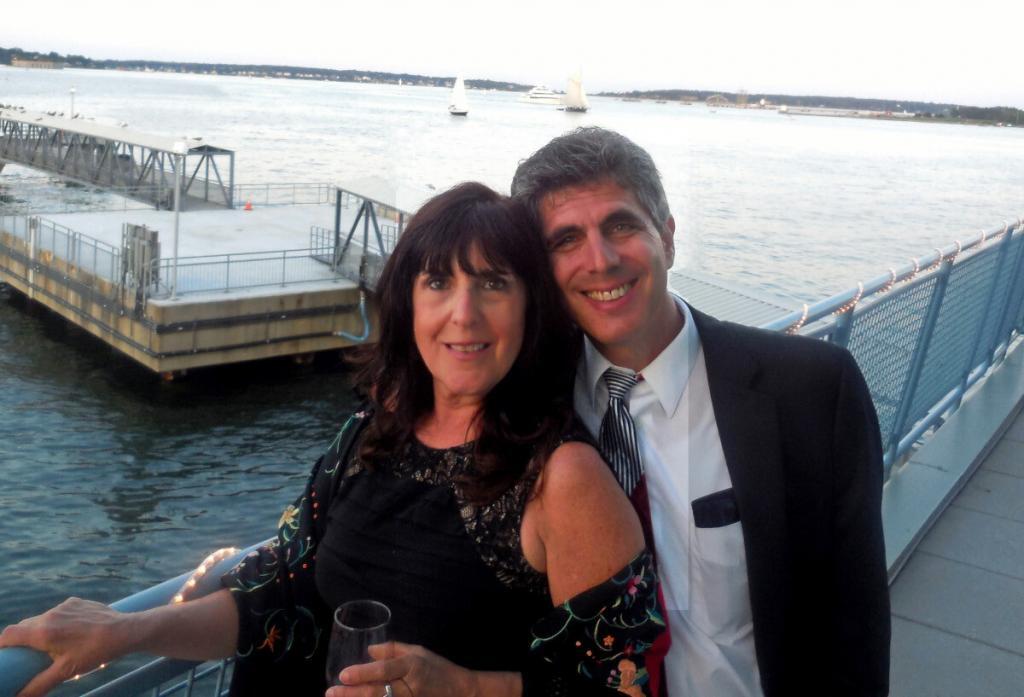
Since Covid-19 has put live music on indefinite hold, what musical activities have you been involved with during this present situation?
I have had the pleasure of participating in two of pianist Andrew Oliver’s House Bound Jazz Recordings. It was a new experience for me, to record in such a remote fashion, but quite fun. Plus, the recordings, “Mad Dog,” and “Smokehouse Blues” both turned out fine.
As an instructor at the New Orleans Trad Jazz Camp, what are the most important aspects of the music that you want to impart to the students?
I love teaching at the New Orleans Trad Jazz Camp. It never fails to be a rewarding week. There, I strive to have the students learn how to communicate musically. Playing old-timey jazz is like having a conversation. However, the goal is to have a well-informed conversation—one that’s collaborative; otherwise, everyone is jabbering at once.
I try to get the student ensembles to play using those well-defined roles that the instruments have in jazz. Even if they are playing wrong changes, etc., they can still go for conversational clarity. Of course, being able to play the chord changes is important. I keep saying, “Learn your major and minor triads and in all directions. Then go for the 7th and 9th chords, etc.”
Most of all, I want to communicate that you can play well and still have fun. Maybe I’m getting through to someone.
What musical projects to you plan to pursue in 2021 and beyond?
I keep practicing the trombone, getting back to those basics Mr. Ostrander instilled in me years ago. I want to be ready when the world and gigs, open up again. I also plan to start teaching again; by Zoom, I suppose, until the atmosphere is healthier.
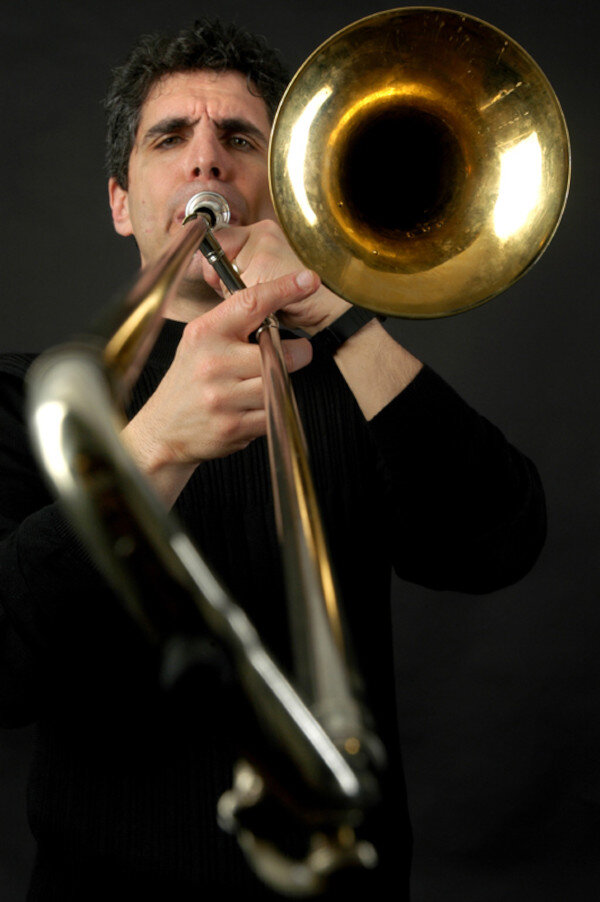
And I want to get my band, the Pie in The Sky Jazz Band back on its feet; we were about to play a few gigs that were booked when the pandemic hit.
Additionally, Doug Benson and I are scheming about a new edition of the King Oliver set to commemorate the centennial of the Creole Jazz Band recordings. As Dick Spottswood famously said, the Oliver band should be reissued once a decade, as audio technology improves.
We have other similar projects in mind. However, the dicey health of the CD as a medium presents a challenge. Maybe we should put our work out on vinyl … at 78 rpm!
DAVID SAGER DISCOGRAPHY
All recordings are CD format, except where noted.
Arbors
Tom Pletcher and Dick Hyman: If Bix Played Gershwin ARCD 19283
Circle
Bob Wilber And Pug Horton And The Crescent City Cats: Dancing on a Rainbow CCD 159
Columbia
Branford Marsalis: I Heard You Twice the First Time CK46083
GHB
Ernie Carson and the Castle Jazz Band: Christmas in the Castle BCD 330
Steve Pistorius Trio with Guests: Under The Creole Moon BCD 552
Hal Smith/Chris Tyle Frisco Syncopators: Milneburg Joys BCD 277 (also cassette)
Good Time Jazz
Chris Tyle’s Silver Leaf Jazz Band: Streets and Scenes of New Orleans GTJCD 15001-2
Jazz Crooner (The Netherlands)
Banu Gibson and the New Orleans Hot Jazz Orchestra: 18th Oude Stijl Jazz Festival Breda 1988 1314588 (LP; one track only)
Jazzology
Ted des Plantes’ Louisiana Swingers: Ain’t’cha Got Music? JCD 225
Tom McDermott and his Jazz Hellions JCD 227
Lino Patruno: Lino Patruno Presents a Tribute to Bix Beiderbecke JCD 343
Loup-Garous
Dan Levinson’s Roof Garden Jass Band: Salutes the ODJB And The Beginning of Recorded Jazz LG1001
RCA (Italy)
Bob Wilber: Bix – Original Motion Picture Soundtrack PL 74766 (also LP, cassette)
Red House
Chenille Sisters with James Dapogny’s Chicago Jazz Band: Whatcha Gonna Swing Tonight? RHR 50
Riverwalk
Jim Cullum Jazz Band – Banu Gibson and the New Orleans Hot Jazz Orchestra: Battle Of The Bands; San Antonio vs. New Orleans RWCD4
Stomp Off
John Gill and his New Orleans Novelty Orchestra: Smile, Darn Ya, Smile SOS CD 1227
John Gill and his New Orleans Novelty Orchestra: Headin’ For Better Times SOS CD 1270
Hotel Edison Roof Orchestra: Breakaway SOS CD 1169 (LP)
Dan Levinson’s Canary Cottage Orchestra: Crinoline Days SOS CD 1169
Dan Levinson’s Canary Cottage Orchestra: Steppin’ Around SOS CD1415
Dan Levinson’s Roof Garden Jass Band: Blue Roses of Far & Near SOS CD 1361
Dan Levinson’s Roof Garden Jass Band: Echoes in the Wax SOS CD1 380
Pam Pamejier’s New Jazz Wizards: The Music of Louis Armstrong, Vol. 2 SOS CD 1169
Chris Tyle and his New Orleans Rover Boys: A Tribute To Benny Strickler SOS CD 1235
Swing Out
Banu Gibson: Let’s Face the Music and Dance CD 112
Banu Gibson and the New Orleans Hot Jazz Orchestra: You Don’t Know My Mind CD 104
Banu Gibson and the New Orleans Hot Jazz Orchesta: ‘Zat You, Santa Claus? CD 106
Banu Gibson and the New Orleans Hot Jazz Orchestra: Love Is Good For Anything That Ails You CD 107
Banu Gibson and the New Orleans Hot Jazz Orchestra: Vintage Banu CD 109
Uptown
Banu Gibson and the New Orleans Hot Jazz Orchestra: Spreading Rhythm Around UR 102 (also LP)
Banu Gibson and the New Orleans Hot Jazz Orchestra: Let Yourself Go UR 103 (LP and cassette)
Wizard
Dan Levinson’s Roof Garden Jass Band: Livery Stable Blues 6001 (Cylinder)
Dan Levinson’s Roof Garden Jass Band: Dixie Jass Band One-Step 6002 (Cylinder)
Dan Levinson’s Roof Garden Jass Band: Blues My Naughty Sweetie Gives To Me 6008 (Cylinder)
Dan Levinson’s Roof Garden Jass Band: Swanee 6012 (Cylinder)
RECORDINGS WITH LINER NOTES BY DAVID SAGER
* = Grammy Nomination
Archeophone
Arthur Pryor: Echoes From Asbury Park ARCH 5008
Isham Jones: Happy – The 1920 Rainbo Orchestra Sides ARCH 6008 *
Real Ragtime (with Richard Martin) ARCH 1001A
Black Swan
Louis Armstrong on Paramount BSCD 43
Off The Record
Cabaret Echoes: New Orleans Jazzers at Work ARCH OTR-MM10-C1
King Oliver: Off The Record ARCH OTR-MM6-C2 *
The Complete Wolverines ARCH OTR 103
Rivermont
The Complete New Orleans Rhythm Kings (with Sue Fischer) BSW-1170 (2 CD set)
Nat Brusiloff: Out Of a Clear Blue Sky BSW-1171 (2 CD set)
Hal Smith is an Arkansas-based drummer and writer. He leads the El Dorado Jazz Band and the
Mortonia Seven and works with a variety of jazz and swing bands. Visit him online at
halsmithmusic.com























